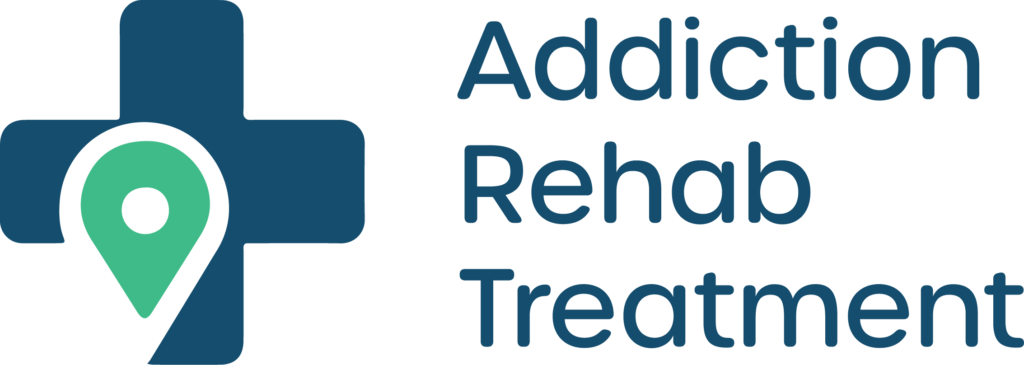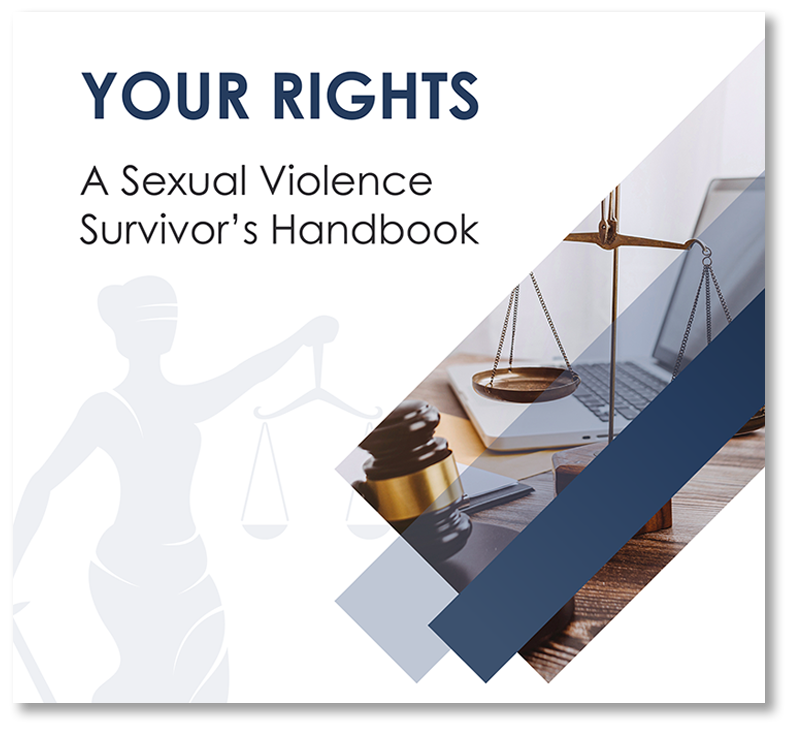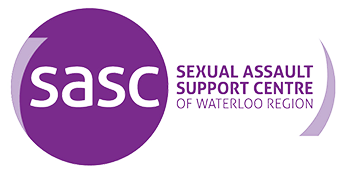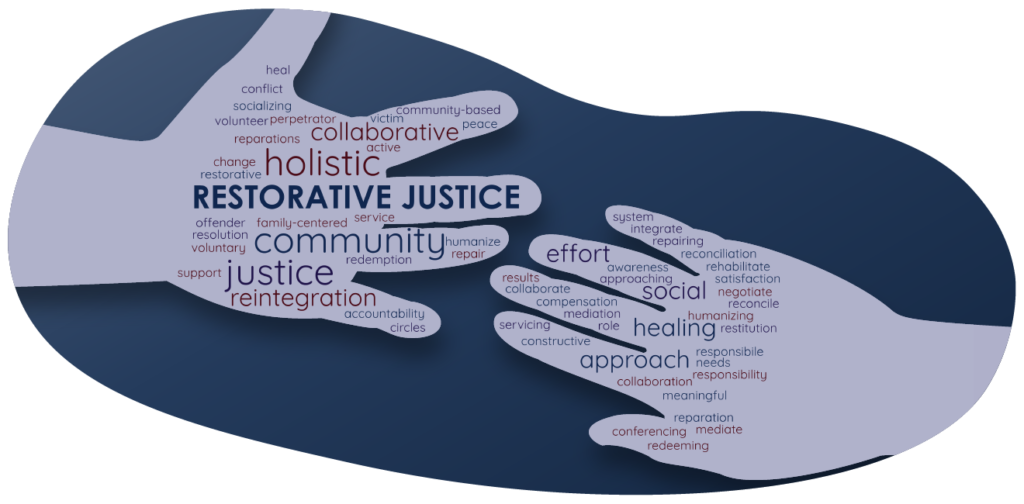The Sexual Harassment and Assault Resource Exchange (SHARE) is a legal service that provides free, confidential legal advice about legal and non-legal options to all Ontario workers experiencing workplace sexual harassment, workplace-related sexual assault, and gender-based harassment in the workplace to help them make informed decisions about addressing their experience. Visit their website to learn more.
Situation 1: A Black female senior manager at work overhears sexual and racial jokes made about her by junior employees, some of who she supervises.
Situation 2: A transgender construction worker is uncomfortable with the sexist, demeaning sexual jokes and comments made by other workers at a job site. They’re not sure if they should talk to the supervisor at the job site about the verbal sexual harassment.
Situation 3: A 15-year-old sales associate receives repeated inappropriate sexual comments and requests for dates from an older customer at the store she works. She doesn’t know if she can complain to Human Resources.
These workers are all experiencing some form of sexual harassment. Workplace sexual harassment is illegal in Ontario workplaces under the Ontario Human Rights Code and the Occupational Health and Safety Act. You have the legal right to report workplace sexual harassment and gender-based harassment to your employer. Under these laws, your employer(s) must create a safe, secure work environment free from harassment, discrimination, and violence.
In Ontario, the Occupational Health and Safety Act (OHSA) and the Ontario Human Rights Code (the Code) are two provincial laws outlining your legal rights in the workplace.
Under OHSA, ‘sexual harassment’ is defined as:
Under the Code, workplace ‘sexual harassment’ is also defined as:
The legal definitions of workplace sexual harassment in OHSA and the Code overlap, with OHSA focusing on what workplaces must do to be safe while the Code describes the legal right to work free from sexual harassment. Sexual harassment can occur over many incidents or be one serious incident causing trauma and harm. Some examples of sexual harassment that can happen in the workplace include:

Under the Code and OHSA, your employer must create a safe, secure work environment free from harassment, discrimination, and violence. Under OHSA, all employers are required to investigate complaints of workplace sexual harassment. Employers with more than 6 employees are also legally required to have a written workplace sexual harassment policy in the workplace. The policy should include:
Your employer is legally required to investigate all complaints of workplace sexual harassment regardless of whether the complaint is in writing. Suppose your employer refuses to investigate complaints or threatens to fire you for making a complaint. In that case, you can make a report to Ontario’s Ministry of Labour about the employer not meeting their duty to investigate under OHSA. The Ministry has the power to penalize, order your employer to investigate or hire a third-party investigator. Despite these legal rights and options, you or other workers may not report sexual violence at work because of power imbalances and barriers to reporting.
Sexual harassment at work is about power and control. Anyone can experience sexual harassment at work regardless of their position. However, some groups are more vulnerable than others because of power imbalances and dynamics. These two factors can impact your decision to respond or report sexual harassment to an employer. Power dynamics dictate who has more authority and power in professional relationships and settings. While power imbalances go beyond authority and can include interconnecting social factors that you and other workers may not have any control over, such as:

Power dynamics at work are often combined with discriminatory behaviours and stereotyping connected to protected characteristics under the Code such as race, sex, social assistance, sexual orientation, gender identity, disability, place of origin, and age. Many of these discriminatory actions and behaviours are hard to recognize in situations of sexual harassment at work because they might be indirect or unintentional. In the above example of the Black female senior manager, racist stereotypes depicting Black women as angry, bossy, or hyper-sexual can influence the Black female manager’s experience of sexual harassment at work, even from junior employees.
Power imbalances can overlap differently for you and other workers, creating unique barriers to reporting. Power and control in workplace relationships mean you may not feel safe or supported enough to report workplace sexual harassment and violence without negative consequences. In the above example of the 15-year-old sales associate, she may not know that she can report due to her lack of job experience and age. These barriers are different from the one impacting the trans construction worker, who may not want to report fearing further ostracization from their colleagues due to difficulties finding positions that hire trans workers. Barriers to reporting sexual harassment at work include any reason you may not want to speak about your experience. Barriers include:
Power dynamics and imbalances can become barriers that make it difficult for you to respond and talk about your experience of workplace sexual harassment with an employer or with people you trust. Despite these barriers, you have reasons that can motivate you to report. Motivators to report workplace sexual harassment are:
You are not alone. Support is available to help you understand your options to address your unique situation of sexual harassment at work.
Reporting workplace sexual harassment to employers is a job-protected legal right in Ontario. However, reporting is not mandatory. You can choose to file a formal report to your employer only if you feel safe doing so. You do not need to file a formal report if you are unsafe or unsupported in your workplace. Speak to a lawyer for reporting options outside of the workplace. Regardless of how you choose to report, it is important to document the sexual harassment and attempts to report to have evidence is necessary for a formal report. Check out SHARE’s workplace reporting tip sheet for tips while you think about reporting.
Here are five tips to remember when documenting proof of sexual harassment:
It is never your fault for experiencing sexual harassment at work. It is your workplace’s responsibility is to create a safe and secure work environment free from harassment, discrimination, and violence at work as defined under the OHSA and the Code. Your employer must investigate all complaints—informal and formal—and provide support while completing investigations. Support during an investigation can include:
1. Modifying your work environment to reduce contact with the harasser.
2. Taking time off work while the investigation continues.
3. Asking for a support person like a professional or family or friend during interviews
4. Paying for an interpreter so that there are no language barriers.
5. Keeping the investigation private and confidential.
You are not alone; help is available. Contact the Sexual Harassment and Assault Resource Exchange (SHARE) to learn more about legal and non-legal options to address your experience of workplace sexual harassment.

This blog was provided by the experts at Addiction Rehab Treatment – a third-party information service for consumers dealing with addiction or seeking treatment information and practices. Visit their website at addictionrehabtreatment.com to learn more about mental health disorders, how they are treated, and how to get help if you or a loved one suffers from mental illness.

Trauma is something that many people will experience. It’s the result of a stressful event or ongoing situation that threatens someone’s sense of security – creating a sense of helplessness for the individual. Emotional and psychological trauma can result in long-term effects like disturbing memories, substance abuse, panic attacks, anxiety, and more. It could also make people feel disconnected, detached, numb, and cautious of those around them.
Traumatic experiences vary hugely and something that could be extremely traumatic for one person could be a mere inconvenience for the other. Often, a traumatic event involves some sort of threat to safety or life, but it could also be an event that leaves someone feeling isolated, threatened, or overwhelmed.
At the end of the day, trauma isn’t defined by the objective circumstance of the event, but rather it’s the subjective emotional experience of the individual experiencing the event. The more the event makes someone feel threatened, frightened, helpless, or emotional, the more likely it is that they will experience symptoms of trauma down the line.
We’re going to look at the things that can cause trauma, as well as the most common signs and symptoms that could indicate that someone is struggling to cope with a traumatic situation.
As mentioned, the extent of a traumatic event is something that is determined by the individual experiencing it. In general, however, emotional and psychological trauma is often caused by:
Many people will experience overwhelming emotional and physical reactions during and immediately after a traumatic event. This is the body’s natural coping mechanism when it encounters a perceived threat.
Most people will find that these reactions grow weaker over the days or weeks that follow the event. Some individuals, however, continue to experience severe psychological trauma that could become worse months after the event occurred.
These reactions could be caused by the severity of the event, how available emotional support is, past and present stressors and triggers, personality types, and different coping mechanisms. How we react to trauma is entirely down to the individual; there is no right or wrong way to feel after a traumatic event and people should never be judged on how they react to the experience.
There are no normal reactions to abnormal events, and every person could experience a wide range of physical and emotional responses from their trauma.
That being said, these are just some of the most common symptoms that people experiencing psychological trauma present:

The most common cognitive effects shown by people suffering from trauma include:
People that are having problems after a traumatic event will usually exhibit the following behavioural changes:


These are the physical symptoms commonly presented by those suffering from trauma:
People that are suffering from trauma often have the following psychological symptoms:

Trauma symptoms are mostly experienced for just a few days to a few months and will gradually fade as the event is processed. Of course, it’s still possible to feel the effects of trauma down the line on anniversaries or when something reminds the person about the event.
Suppose trauma systems continue to overwhelm a person or become worse over time, and they are struggling to move on with their everyday lives. In that case, the person could be experiencing Post-Traumatic Stress Disorder (PTSD).
When trauma results in PTSD, it inhibits the natural way that the body and mind process a traumatic event and causes the nervous system to become “stuck.” Surviving a traumatic event, even if it doesn’t involve death, creates a temporary loss of safety.
Our natural reaction to loss is grief, and those that have been through a traumatic event will have to go through the grieving process in order to heal from the trauma and move on.
Whether it’s been a few days, a few weeks, or a couple of months, there are some things that people can do to help themselves heal from trauma and lessen the effect that they are having on their everyday lives. Here are just some activities that can help people recover from trauma:
Trauma recovery has not got a definitive timeline, and everyone heals at their own pace. However, if months have gone by since the traumatic event and symptoms are still present, or even getting worse, then it’s time to get in touch with a trauma expert for professional help.
Processing and healing from trauma can be a painful, scary, and uncomfortable process, so it’s important that it is done with the help of an experienced professional. A trauma expert will know exactly how to slowly move through the process and use various methods to help their patient heal according to what suits the individual best.
Source:
https://addictionrehabtreatment.com/mental-health/trauma/signs-and-symptoms-of-trauma/
Are you considering pursuing justice through the legal system but don’t know where to begin? You’re not alone. The legal justice system can be confusing and difficult to navigate. But there are services available that can help you by providing free, independent legal advice. Sometimes you just need to talk to a professional and know your options before going forward. Our Legal Aid section provides individually sourced legal services and specialized programs for survivors of domestic abuse, sexual assault, and other forms of violence. These services are available remotely or in-person based on region. If you have any questions, we encourage you to visit the websites provided to learn more.
The Sexual Harassment and Assault Resource Exchange (SHARE) is a legal service offered by the Human Rights Legal Support Centre and provides free, confidential legal advice about legal and non-legal options to all Ontario workers experiencing workplace sexual harassment, workplace-related sexual assault, and gender-based harassment in the workplace to help them make informed decisions about addressing experiences of sexual harassment in the workplace.
SHARE helps workers with:
SHARE legal services are available to all workers in Ontario regardless of age, immigration status, and income.

Do you know of any free legal services for survivors of gender-based violence? Let us know.
Legal Disclaimer:
Our website provides general information that is intended, but not guaranteed, to be correct and up-to-date. The information is not presented as a source of legal advice. You should not rely, for legal advice, on statements or representations made within the website or by any externally referenced Internet sites. If you need legal advice upon which you intend to rely in the course of your legal affairs, consult a competent, independent attorney. Vesta Social Innovation Technologies does not assume any responsibility for actions or non-actions taken by people who have visited this site, and no one shall be entitled to a claim for detrimental reliance on any information provided or expressed.
This blog was written by Flora Vineberg of SpringLaw – a Canadian virtual law firm that advises on workplace legal issues. Visit their website at springlaw.ca to learn more about their firm and resources available, including their award-winning blog.

During Part 1 of this blog, we outlined three initial legal options for survivors of sexual assault and/or harassment in the workplace context. These included filing a workplace complaint, filing a grievance if you are in a unionized setting, or submitting an application to the Human Rights Tribunal of Ontario (HRTO). Here, we continue to outline the remaining three options for legal redress in this context.
Per Ontario’s Occupational Health and Safety Act, your employer is responsible for ensuring a safe, harassment-free work environment. If you resign from your employment you typically will not be entitled to any compensation from your employer. If you are terminated, you will typically be entitled to notice of termination – colloquially known as a “severance package”. However, the law has carved out an exception in circumstances where the employer’s conduct has been so bad that you essentially have no choice but to quit. This is called a “constructive dismissal.” Depending on the facts of each case, asserting a successful constructive dismissal claim could result in a damages (compensation) award comparable to what you would have been entitled to had you been terminated. If your constructive dismissal arose out of the context of being sexually harassed or assaulted at work, you may also be entitled to additional forms of compensation including human rights or general damages.
If you experience sexual assault or harassment at work, you may have the option to sue your abuser (individually) as well as your employer in some circumstances. The extent to which a lawsuit makes sense will depend on a variety of factors, and these cases can often be quite complex and time-consuming. In Ontario, there is no statute of limitations for suing someone based on sexual assault and/or assault in the context of a power differential. If you are considering filing a lawsuit, please get in touch with us first for more information.
As a survivor of sexual harassment or assault, you always retain the right to report your allegations to the police; there is no contract, release, or agreement that takes way this right. In Ontario, there is no statute of limitations for making a report to the police. Going through the criminal process can be extremely difficult, and potentially re-traumatizing. If you have any questions regarding reporting to police and/or implications this may have on your employment, please contact us for more information.
Your employer should have Anti-Violence, Anti-Harassment and Anti-Discrimination Policies regulating conduct in your workplace. These are meant to promote and ensure a safe work environment. If you experience sexual harassment or sexual assault at work, please contact us to discuss your various legal options.
If you are an employer and would like guidance or additional information on conducting trauma-informed workplace investigations, please get in touch.
Written by: Flora Vineberg

This blog was written by Flora Vineberg of SpringLaw – a Canadian virtual law firm that advises on workplace legal issues. Visit their website at springlaw.ca to learn more about their firm and resources available, including their award-winning blog.

In the wake of the #MeToo era, a burgeoning consciousness has grown around the existence of and need to address sexual harassment and sexual assault in the workplace. Individuals of all genders and orientations have found the courage to come forward, and legislation in Ontario has made it mandatory for employers to sufficiently investigate these allegations in a timely and comprehensive manner. Trauma-informed Workplace Investigations inherently require a sound understanding of power dynamics and nuanced forms of sexual harassment. New hybrid work models pose unique obstacles for enforcing cyber-bullying and anti-discrimination/harassment policies, and have brought to the forefront the importance of building a workforce predicated on respect, plurality, accountability, legal compliance, and employee well-being. As part of this, employees who experience sexual assault and/or harassment in the workplace may have different legal options at their disposal.
In Part 1, we begin here with a review of three possible options.
While employers are obligated to investigate all allegations they knew or ought to have known about – negating the requirement that a formal complaint be made in order for an investigation to be required – there is often a benefit to making a formal complaint to your HR department and/or through the appropriate channels. The steps to make a complaint should have been outlined to you as part of your on-boarding and training process. Often these are contained in a Respect in the Workplace or Anti-Harassment Policy. Filing a formal complaint keeps a documented track record of behaviour, and allows your employer to take steps towards addressing the issues as soon as practicable, in the form of a workplace investigation. This process aims to preserve confidentiality as much as possible and, depending on the nature and complexity of the allegations, should aim to be wrapped up within a 90-day period. If your allegations involve the person(s) to whom you report workplace-related concerns, it is important to inquire about other avenues for reporting and making your employer aware.
If you feel your safety is at imminent risk, making this known to your employer becomes all the more critical. For employers interested in conducting trauma-informed workplace investigations, please see our free webinar on this topic here.
If you work in a unionized environment, your collective agreement likely contains a clause or provision addressing discrimination and harassment, and outlines the appropriate grievance procedure that may encompass both alternative dispute resolution (“ADR”) as well as other arbitration options. Your Union Representative or Steward is a good resource to discuss options available for filing a grievance related to sexual assault or harassment at work.
The Ontario Human Rights Code bans discrimination based on certain enumerated prohibited grounds, such as sex, sexual harassment, gender identity and expression, for example. The Code also prohibits ‘sexual solicitation’ (seeking a sexual or romantic relationship in exchange for something) while at work or in the process of accessing certain services. If you experience sexual assault, harassment or solicitation at work, you have one year from the time of the event to file an Application to the Human Rights Tribunal of Ontario (“HRTO”), seeking compensation which may include lost wages, general, or human rights damages. The Tribunal can also award other remedial measures to prevent future harassment or abuse, including additional training and revisions to applicable workplace policies.
We have addressed three options for pursuing legal redress if you have experienced sexual assault and/or harassment in the workplace. As each option has pros and cons, it is important to seek legal advice prior to determining which may best serve your interests and needs. The help of informed legal counsel can offer additional insight into the processes and procedures required for pursuing legal recourse, and assist you in navigating these channels. Please contact us here for more information.
For Part 2 of this blog, we will continue to explore three additional options for survivors, as well as responsibilities and things to be aware of for employers.
Written by: Flora Vineberg

VESTA has created a user-friendly guide for people who have experienced sexual violence. In this guide, we cover topics like definitions, the way the Canadian criminal code outlines terms, myths, important details regarding reporting and court proceedings, links to 24/7 crisis services, and more. Download the full handbook or individual chapters as needed. Our hope is that our straightforward guide is able to bring clarity to some of the common questions people may have surrounding sexual violence. We welcome you to provide feedback and hope that you are able to use this guide to take back your power and make informed decisions that are right for you and your situation.

Chapter 1: What Is Sexual Violence?
Chapter 2: What About Consent?
Chapter 3: Myths & Facts About Sexual Violence
Chapter 4: How Do I Tell Family, Friends or My Employer?
Chapter 5: What Are My Options?
Chapter 6: Barriers to Reporting
Chapter 7: Reporting – When, Where & How
Chapter 9: Pre-Trial Proceedings
Chapter 10: The Criminal Trial
Chapter 11: Where Can I Go For Help?
Legal Disclaimer: This handbook provides general information that is intended, but not guaranteed, to be correct and up-to-date. Vesta Social Innovation Technologies does not assume any responsibility for actions or non-actions taken by people who have used this handbook for information, and no one shall be entitled to a claim for detrimental reliance on any information provided or expressed.
[wpdiscuz-feedback id=”x207keoi24″ question=”Please leave your feedback on this post.” opened=”0″][/wpdiscuz-feedback]After a crime such as sexual assault has occurred, you may find yourself struggling with how to open up about your story to people in your life. When and if you decide to tell people, here are our suggestions on how to approach such a sensitive subject.
Remember – your story is always up to you. You alone decide how much detail you want to disclose. Just because someone asks questions doesn’t mean you have to answer them.
You might say…
You may want to tell all of your family at the same time or choose the person you feel most comfortable with and tell them first to get their support. You may want to disclose everything or only some details.
You might say…
Before disclosing a sexual assault to someone, it is important to consider if you can trust the person. Here are some ways you can tell:
Also, think about whether this individual is likely to respond in a supportive way. Are they likely to believe you? Can they be someone who provides you with emotional support? Do they know the perpetrator? These factors may impact how they respond to your disclosure.
Resources:
Signal for help
Telling your partner of your Sexual Assault
When to tell a new relationship about your abuse, assault
When it comes to sexual violence, can you separate the myths from the facts? Here are some misconceptions and the truth about sexual violence.
| MYTH: Many people believe that sexual violence won’t happen to them or someone they know, but that’s not true. | FACT: It doesn’t matter about your social status, race, or background – sexual assault can happen to anyone. However, there are people who are more at risk of experiencing assault, including people with disabilities, those who are a part of the LGBTQ+ community, especially those who are trans. Some people believe that sexual violence is committed by strangers, but again, most sexual assaults (82%) are committed by someone you know and trust. |
| MYTH: Sexual assaults happen in public, and in dark alleys. | FACT: Most often, assaults happen in homes and private places. |
| MYTH: If someone is passed out (from drugs, alcohol, etc.), it is okay to have sex with them. | FACT: If anyone is unconscious or incapable of consenting due to the use of alcohol or drugs, they can’t legally give consent. Without consent, it is sexual assault. |
| MYTH: If the assault wasn’t reported it doesn’t constitute sexual assault. | FACT: A sexual assault is a sexual assault, and only 10% of known occurrences are reported to the police. People sometimes think that survivors make up stories and tell lies about sexual violence, but the number of false reports for sexual assaults are very low and consistent with the number of false reports for other crimes in Canada. Sexual assault carries such a stigma that many survivors prefer not to report for fear of being re-victimized. |
| MYTH: If an individual didn’t scream or fight back, this means they’ve given consent. | FACT: Being afraid or paralyzed with fear is most likely the reason. Often people believe that the perpetrator will become more violent if you struggle, and if you’re under any influence, this may also prevent resisting. There is a widely held belief that if someone isn’t crying or visibly upset, then it’s not a big deal. The fact is each person responds to trauma differently – they may cry or stay calm. They may be silent or get very angry. Their behaviour isn’t an indicator of their experience. It is important not to judge anyone by how they respond to the assault. |
| MYTH: If there is no physical harm on the victim, then it wasn’t sexual assault. | FACT: Lack of physical injury doesn’t mean that the person didn’t use threat by a weapon or other coercive actions that don’t leave physical harm, but psychological harm. |
| MYTH: If the act of rape didn’t occur, it means it wasn’t sexual violence. | FACT: Any unwanted sexual contact is considered to be sexual violence. A survivor can be severely affected by all forms of sexual violence, including unwanted fondling, rubbing, kissing, or other sexual acts. Many forms of sexual violence involve no physical contact, such as stalking or distributing intimate visual recordings. All of these acts are serious and can be damaging. |
| MYTH: If someone can’t give chronological details, or there are gaps in the telling of the sexual violence, then it didn’t occur. | FACT: Shock, fear, embarrassment, and distress can impair memory. Many survivors attempt to minimize or forget the details of the assault as a way of coping with trauma. Memory loss is also common when alcohol and/or drugs are involved. |
| MYTH: Those with disabilities don’t experience sexual assault. | FACT: People with disabilities are at a high risk of experiencing sexual violence or assault. In fact, they are twice as likely to be assaulted than able-bodied people. |
| MYTH: You can’t sexually assault your spouse because you’re in a relationship. | FACT: Sexual assault can occur in a married or other intimate partner relationship. A partner still needs consent to engage in any and all sexual activities. |
Source:
Sexual Violence Survivor’s Handbook – Chapter 3: Myths & Facts About Sexual Violence
Are you considering pursuing justice through the legal system but don’t know where to begin? You’re not alone. The legal justice system can be confusing and difficult to navigate. But there are services available that can help you by providing free, independent legal advice. Sometimes you just need to talk to a professional and know your options before going forward. Our Legal Aid section provides individually sourced legal services and specialized programs for survivors of domestic abuse, sexual assault, and other forms of violence. These services are available remotely or in-person based on region. If you have any questions, we encourage you to visit the websites provided to learn more.
Established by the Sexual Assault Support Centre of Waterloo Region, this program supports survivors of sexual violence throughout their legal process. From start to finish, the Sexual Violence Legal Advocacy program offers a variety of services to assist those seeking justice, including case management, assistance with documents, court accompaniment, and more.
This is a free service open to all genders. Visit their website below to learn more and access their intake form today.

Do you know of any free legal services for survivors of gender-based violence? Let us know.
Legal Disclaimer:
Our website provides general information that is intended, but not guaranteed, to be correct and up-to-date. The information is not presented as a source of legal advice. You should not rely, for legal advice, on statements or representations made within the website or by any externally referenced Internet sites. If you need legal advice upon which you intend to rely in the course of your legal affairs, consult a competent, independent attorney. Vesta Social Innovation Technologies does not assume any responsibility for actions or non-actions taken by people who have visited this site, and no one shall be entitled to a claim for detrimental reliance on any information provided or expressed.
Everyone has different ways of healing; there is no one “right way.” Sometimes we find comfort in those around us, and sometimes we simply find comfort in our own homes. While the obvious solution when seeking justice may be to rely on legal institutions, such as prisons or courts, that may be difficult for many. Another option you may not be aware of is restorative justice.
Restorative justice (RJ) focuses on repairing the harm caused by looking and thinking about crime using a holistic, collaborative, and humanizing approach. It views crime not only as a violation of the law but also of people, relationships, and communities.
RJ can be requested by victims of a crime; however most programs require the voluntary participation of the offender and that they accept responsibility for their actions. This method of justice holds the offenders responsible for their actions by providing parties affected by the crime an opportunity to address their needs and to seek a resolution that can amend the wrongdoing, thereby preventing further crime, harm, and victimization.
When effectively used, restorative justice can lead to better outcomes for victims and offenders, and reduce the number of cases that go to trial.
Restorative justice is an alternate model of the justice process where victims, communities and offenders affected by an injustice have an opportunity to discuss how they have been impacted and decide what should be done to repair the harm. Within the RJ model, offenders are asked to acknowledge their crime and attempt to atone for it.
While coming from the same background as restorative justice, transformative justice (TJ) seeks to change the larger social structure as well as the personal structure of those involved. Transformative justice wants to inform victims with answers as to why they were victimized, recognizing the wrong that has occurred, providing restitution, and establishing peace.
Both TJ & RJ concepts are essentially reaching for the same goal. Transformative justice (TJ) is a political framework and approach for responding to violence, harm and abuse. Restorative justice is an approach focused on repairing harm that’s occurred in a community by using techniques that involve all parties; the victim, the offender, their social networks, justice agencies, and the community.
As with any decision, it is important to explore which option works for you.
Restorative justice can be used with varying programs at multiple stages of the criminal justice process. Please inform yourself on the options available to you before making a decision, as always it is best to consult a legal professional to fully understand the implications before you make a decision.
Most RJ programs are not equipped to deal with serious cases involving power inequalities, such as domestic violence. Some programs have developed partnerships with appropriate supporting agencies to offer RJ in some of these cases, but that is not the norm.
Many of the programs available through RJ require the voluntary participation of the offender and that they accept responsibility for their actions. Some, but not all programs, require the participation of victims. Programs can take place at different stages of the criminal justice process. For example, some programs may require the offender to plead guilty, others may take place after charges have been laid. Some initiatives take place after conviction, but before sentencing occurs (pre-sentence programs), while others take place after an offender has been sentenced (post-sentence programs).
Below is a list outlining different types of restorative programs available throughout Canada, as provided by the Correctional Service of Canada Dispute Resolution Unit.

Victim Offender Mediation Programs (VOMP)
Trained mediators bring victims and offenders together in a safe and structured setting to discuss the crime, its impact, and any agreement to address it. The offender is afforded opportunities to make apologies, provide information, and to develop reparative plans and gain insight for personal growth. More indirect variants also exist where there is instead an exchange of letters or videos between the victim and their offender.
Surrogate Victim/Offender Restorative Justice Dialogue
A victim or an offender may choose to meet with someone who committed a similar crime, or who was similarly victimized, instead of meeting with the specific offender or victim in his or her case. The surrogate victim/offender dialogue has proven beneficial to many victims who want to experience a restorative meeting, but who for whatever reason cannot bring themselves to meet the offender in their case.
Conferencing
The victim, the offender, their supporters, and community members work toward reparation, facilitated by an independent third party.
Victim Panels
A group of victims who speak to an offender about the impact that a crime has had on their lives. Victim-offender panels bring together victims with offenders who have committed a similar crime to that which they have experienced.

Circles
Similar to mediation, however they involve community members such as family in addition to the victim and offender.
Circles of Support and Accountability
Groups of volunteers, often from the faith communities, that form a “covenant” with a released high-risk sex offender. For its part, the Circle helps provide a healthy environment for the ex-offender by advocating with various systems, dialoging the ex-offender about his attitudes and behaviours, and mediating concerns with the community. The victim’s participation is not required.

Peacemaking Circles
Rooted in Aboriginal experience and tradition, this program is based on the belief that the primary responsibility for addressing the problems of crime lies in the community and not just with those directly impacted by the crime and their immediate families. These circles focus on trying to uncover the underlying problems, and to restore balance where possible.
Healing Circles
Ceremonies intend to bring conflict to a close, they allow the participants to express their feelings, and indicate that the offender and victim have undergone personal healing.
Sentencing Circles
The victim, offender, family, and community members, meet with a judge, lawyers, police, and others to recommend to the judge what type of sentence an offender should receive. The victim and the community have the opportunity to express themselves, address the offender, and may also take part in developing and implementing a plan relating to the offender’s sentence.
Community-Assisted Hearings/Releasing Circles
This is available to offenders who are indigenous. This process is similar to a parole hearing in that it occurs within the prison. It differs from a traditional hearing in that all of the participants, including members of the board, the offender, their parole officer, their support person, aboriginal elders from the community, the hearing assistant, and the victims (if they are present) sit in a circle for the purposes of the hearing.

Referral to RJ programs in Canada can occur at various entry points within the criminal justice system – pre-charge (referral by police), post-charge (crown), pre-sentence (courts), post-sentence (corrections), or pre-revocation (parole).
Accessing Services through the Restorative Opportunities (RO) Program is available to people harmed by the offence requesting to communicate with the offender who caused the harm. Services provided by the RO program are available to registered victims, victim representatives acting on behalf of registered victims, and non-registered victims impacted by the crime.
If you are interested in Restorative Opportunities, you may contact the Restorative Justice Division at 1-877-730-9673 or by email. You can also call CSC’s Victim Services Division toll-free at 1-866-806-2275, where the call will be directed to the appropriate Victim Services Officer.
A directory link to programs available in Canada is below.
Resources:
https://www.justice.gc.ca/eng/cj-jp/rj-jr/sch-rch.aspx
https://www.sace.ca/learn/transformative-restorative-justice/
https://www.csc-scc.gc.ca/restorative-justice/003005-1000-eng.shtml
https://www.victimsfirst.gc.ca/res/pub/gfo-ore/pdf/RestorativeJustice.pdf
http://www.csc-scc.gc.ca/text/rj/crg-eng.shtml
http://www.rjlillooet.ca/documents/restjust.pdf
https://restorativejustice.org/rj-archive/restorative-justice-and-transformative-justice-definitions-and-debates/
Legal Disclaimer:
Our website provides general information that is intended, but not guaranteed, to be correct and up-to-date. The information is not presented as a source of legal advice. You should not rely, for legal advice, on statements or representations made within the website or by any externally referenced Internet sites. If you need legal advice upon which you intend to rely in the course of your legal affairs, consult a competent, independent attorney. Vesta Social Innovation Technologies does not assume any responsibility for actions or non-actions taken by people who have visited this site, and no one shall be entitled to a claim for detrimental reliance on any information provided or expressed.